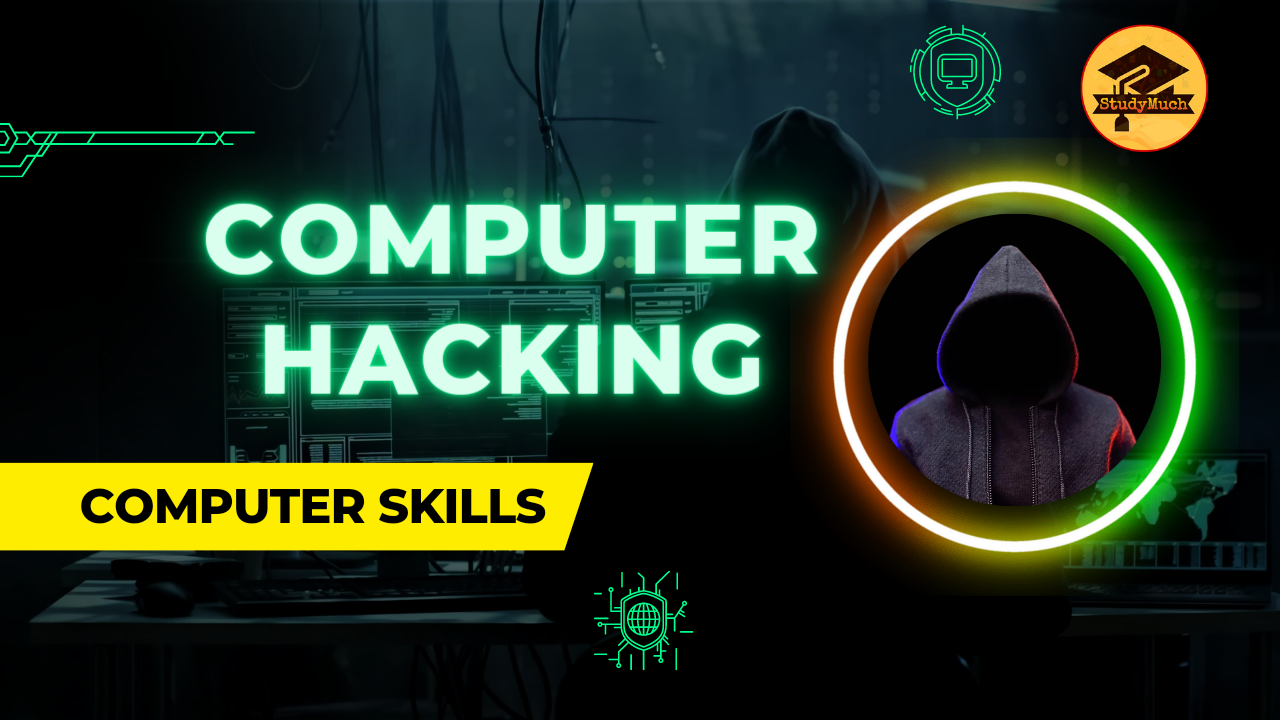Computer Hacking

Computer Hacking
In this article you will learn about the Computer Hacking, and types of hacking with Definitions. In today’s time there are many types by which computer and mobile systems can be hacked. And you will read about the same in this article.
What is Computer Hacking
Hacking is an attempt to exploit a computer system or a private network inside a computer. It is the unauthorized access to or control over computer network security systems for some illicit purpose. Hacking is various type that are used to hack any computer system like Viruses, keyloggers, Rootkit, Packet Sniffer, spoofing attack, Trojan horse, Password cracking, Brute Force Attack are various techniques for hacking.

Computer Virus
A computer virus is a malicious software program loaded onto a user’s computer without the user’s knowledge and performs malicious actions.
Stuxnet, Petya, Code red, Melissa, Sasser, Zeus, Crypto Locker, Flashback re some examples of Viruses.
The Elk Cloner virus was the first self-replicating computer program to spread on a large scale. It was created by a 15 years old Rich Skrenta in 1982.
Computer Warm
A computer worm is a malicious, self-replicating software program (malware) which affects the functions of software and hardware programs. Stuxnet is the most famous computer warm.
Botnet
Botnet is a set of networks connected computers devices that are used for malicious purposes. Each computer in a botnet is called bot. It is known as Zombie.
Trojan Horse
Trojan horse is a type of malware that presents itself as legitimate software. It may perform actions on a computer that is genuine but will install malware actions.
Rootkit
A rootkit is a secret computer program designed to provide continued access to a computer while actively hiding its presence. Rootkits are associated with malware such as Trojans, warms, viruses.
Keylogger
A keylogger is a type of malware that stores all keystrokes of a computers. It can record all sorts of personal information, such as usernames, password, credit card number and personal documents such as email and reports etc.

Spyware
Spyware is a software that is installed on a computer device without the end user’s knowledge. It steals internet usage data and sensitive information such as username and password, activating the microphone or camera on a computer to record physical activities.
Adware
Adware is unwanted software designed to display advertisements on the computer screen to generate income. This type of ads cannot be removed easily.
Phishing
Phishing is a cyber-attack that used to steal user data, including login credentials and credit card numbers. They use email as a weapon and trick the email recipient into believing that the massage is received from real companies such as banks, Amazon etc. to harvest the recipient’s details. Hacker used many types of Phishing that are Email Phishing, Spare Phishing (target special person and/organization) etc. are techniques of Phishing.
Brute Force Attack
A brute force attack is a hacking method that uses trial and error to crack passwords, login credentials and encryption keys. It is a simple yet reliable tactic for gaining unauthorized access to individual account and organization’s systems and networks. Here the Hackers tries multiples usernames and passwords, often using a computer to test a wide range of combinations, until they find the correct login information.
So, in this article you learned about the Computer Hacking, and types of Hacking, I hope you read well and learned something amazing. If you have any questions and doubts, please ask in the comment sections.
Read Also –


2 Comments
gate io nkn · June 11, 2023 at 8:57 pm
Reading your article helped me a lot and I agree with you. But I still have some doubts, can you clarify for me? I’ll keep an eye out for your answers.
tlovertonet · May 7, 2024 at 6:36 am
Precisely what I was looking for, thanks for posting.